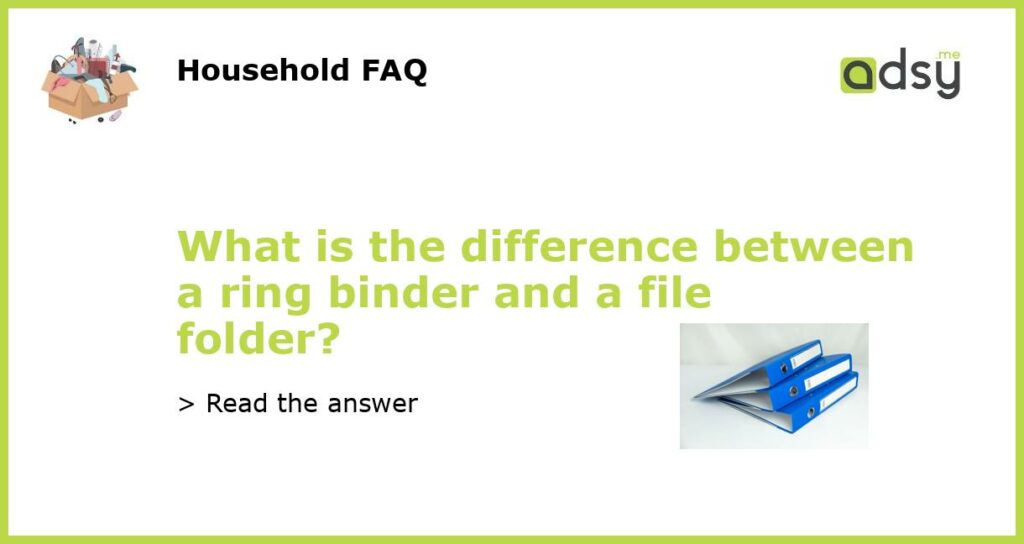File Folder vs Ring Binder: Understanding the Key Differences
h3: Introduction
p: When it comes to organizing and storing documents, two popular options that often come to mind are file folders and ring binders. Both serve the purpose of keeping important papers organized, but they have distinct differences that make them suited for different needs. In this article, we will explore the key differences between file folders and ring binders, and help you understand which option might be the best fit for your specific requirements.
h3: File Folders: The Basics
p: File folders are a basic and commonly used option for document organization. They consist of a single sheet of cardstock or paper that is folded in half and secured on three sides, creating a flap that can hold loose papers. File folders are typically used when you need to keep documents together, but don’t require the ability to easily add or remove pages. They are often used for basic filing needs, such as sorting and storing paperwork, client files, or project documents. File folders are available in various sizes, such as letter size and legal size, to accommodate different document formats.
h3: Ring Binders: A More Versatile Option
p: Ring binders, on the other hand, offer a more versatile approach to document organization. They consist of a cover, spine, and rings that hold pages securely in place. The rings can be opened and closed, allowing for easy insertion and removal of pages as needed. This flexibility makes ring binders an excellent choice when you need to frequently update or rearrange the contents of a document. They are commonly used for presentations, training manuals, project binders, and other situations where you may need to add or remove pages over time. Ring binders are available in different ring sizes, such as 1 inch, 2 inch, and 3 inch, to accommodate varying document thicknesses.
h3: Storage Capacity and Portability
p: One of the key differences between file folders and ring binders is their storage capacity. File folders, being a folded sheet of paper or cardstock, have limited storage capacity and can typically hold only a small number of papers. On the other hand, ring binders offer a higher storage capacity, as they can hold multiple pages securely within the rings. This makes ring binders a better choice for organizing larger documents or collections of papers. However, it’s worth noting that the increased storage capacity of ring binders can also make them bulkier and less portable compared to file folders. File folders are generally lightweight and easy to carry, making them a convenient option for individuals on the go.
h3: Accessibility and Organization
p: Another important factor to consider when choosing between file folders and ring binders is accessibility and organization. File folders allow for quick and easy access to the contents of the folder since you can simply flip open the flap and view the papers inside. However, the lack of rings makes it difficult to rearrange or reorganize the pages within the folder. On the other hand, ring binders offer better organization capabilities, as you can easily add, remove, or rearrange pages as needed. The rings allow for easy flipping through pages, which can be beneficial in situations where rapid access to specific information is required. Additionally, ring binders often come with additional features such as pockets, dividers, and spine labels that further enhance organization.
h3: Conclusion
p: In summary, file folders and ring binders serve different purposes when it comes to document organization. File folders are a basic and lightweight option, ideal for basic filing needs and easy portability. Ring binders, on the other hand, offer a higher storage capacity and greater flexibility in terms of adding, removing, and rearranging pages. They are often used for more extensive document collections or situations where frequent updates are required. When choosing between file folders and ring binders, consider factors such as your specific storage needs, portability requirements, accessibility, and organization preferences. Understanding the key differences between these two options will help you make an informed decision and ensure that your documents are organized in the most effective way.






